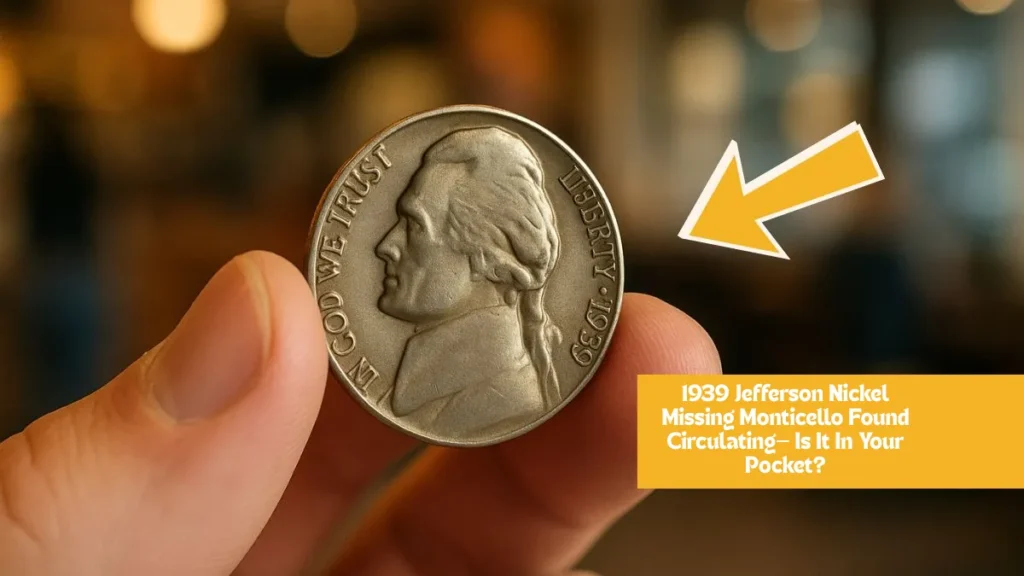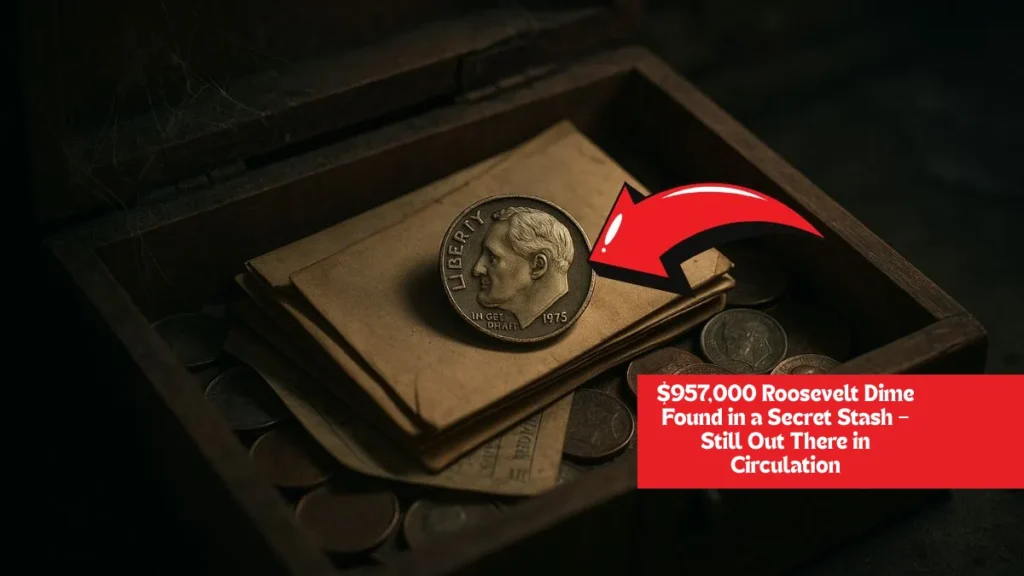A rare and valuable Jefferson Nickel missing the Monticello design on its reverse side has surfaced, creating a buzz among coin collectors and everyday change-checkers. Though it looks like an ordinary nickel at first, this coin lacks one key detail — the famous image of Monticello, Thomas Jefferson’s historic home. Experts suggest it’s the result of a rare minting mistake, and surprisingly, more like it may still be out there in circulation.
A Design That Wasn’t Supposed to Disappear
The Jefferson Nickel has included Monticello on its reverse since its debut in 1938. Errors that remove essential design features are extremely uncommon — especially when the entire image of a building is missing.
According to coin experts, this rare error likely happened when a blank coin planchet was struck using a worn-out or defective reverse die, causing the image of Monticello to either vanish completely or appear faint.
“This is not a minor flaw,” said coin specialist Alan Marks. “It’s an almost complete disappearance of a central design — turning a five-cent coin into something potentially worth millions.”
How Rare Is This Coin?
Very few confirmed examples have been found over the years. Most were either damaged or poorly preserved. The most recent discovery — pulled from a roll of coins at a small-town bank in Illinois — is one of the highest-quality examples ever authenticated.
Estimates put its value between $1.5 million and $3 million, depending on future auction interest and condition over time.
Still in Circulation? Yes — and Here’s Why
Many valuable error coins end up in private collections, but others remain undetected for years. In fact, older nickels with rare flaws can pass through hands unnoticed — showing up in pocket change, vending machines, or bank rolls.
“This is the kind of coin that most people overlook,” said Marks. “But those who know what to look for could make a life-changing discovery.”
What to Look For in Your Nickels
Wondering if your nickel might be worth something? Here are some signs:
- Mint Date: Most missing-Monticello errors come from the 1940s–1960s, though others have surfaced from later years.
- Reverse Check: Look carefully at the back of the coin — a missing or faint Monticello while the front remains clear is a red flag.
- Lettering Issues: Weak or missing inscriptions like “E PLURIBUS UNUM” or “FIVE CENTS” may point to a minting error.
- No Post-Mint Damage: Only flaws made during minting qualify — damage after circulation doesn’t count.
If you suspect you’ve found one, contact a professional grading service like PCGS or NGC before taking any further steps.
Final Thoughts
The discovery of a Monticello-less Jefferson Nickel shows that incredible coin finds can still happen in everyday life. Whether in a coin roll, a tip jar, or a kitchen drawer, rare and valuable coins could be hiding in plain sight.
Before you drop that nickel into a change jar, take a second look — you could be holding a piece of history, and possibly, a small fortune.
FAQs
Q1: What makes the missing-Monticello nickel so valuable?
A: Its value comes from a rare minting error that eliminated a major design feature — Monticello — making it extremely desirable to collectors.
Q2: Can I find one of these nickels in everyday change?
A: Yes, although rare, some may still be in circulation and can be found in coin rolls or everyday transactions.
Q3: How do I know if my Jefferson Nickel is a mint error?
A: Check for a missing or very faint Monticello, weak reverse lettering, and no signs of post-mint damage. A professional evaluation is recommended.
Q4: Where should I go to have my coin checked?
A: Reputable grading services like PCGS (Professional Coin Grading Service) or NGC (Numismatic Guaranty Company) can help you authenticate and value the coin.


